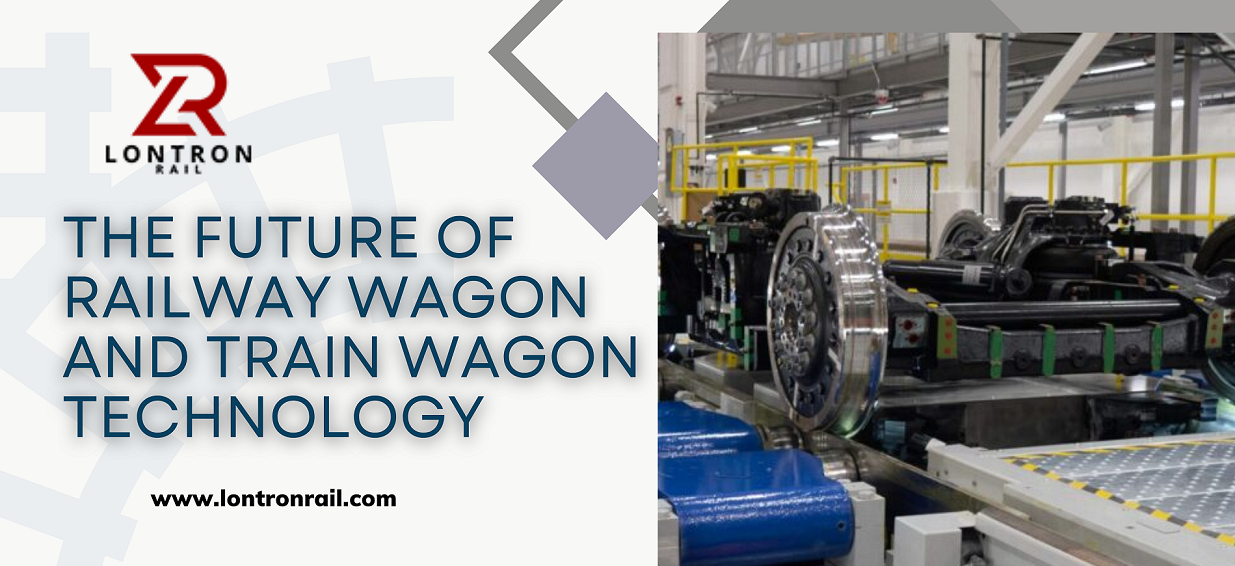Latest Blog
- Home
- Blog
- March 25, 2023 by Admin
- Manufacturing Plants
The Future of Railway Wagon and Train Wagon Technology: Innovation and Sustainability
Railway wagons and train wagons have been a critical component of the transportation industry for centuries, with their use spanning industries from agriculture to manufacturing to shipping. As the world becomes increasingly focused on sustainability and innovation, the future of railway wagon and train wagon technology is looking brighter than ever.
In this post, we'll explore the latest trends and innovations in railway wagon and train wagon technology, as well as the role these technologies will play in a more sustainable future.
1- Digitalization and Automation
Digitalization and automation are transforming every aspect of the transportation industry, including railway wagon and train wagon technology. These technologies are making it possible to optimize the performance of railway wagons and train wagons, reducing waste, and improving efficiency.
The use of sensors and data analytics can help railway companies better monitor the performance of their wagon fleets, identifying areas for improvement and reducing maintenance costs. Automation technologies, such as self-driving wagons and train wagons, are also becoming increasingly common, reducing the need for manual labor and improving safety.
2- Lightweight Materials
Lightweight materials are essential for making railway wagons and train wagons more sustainable. By reducing the weight of wagons, companies can reduce fuel consumption and emissions, making rail transportation more environmentally friendly.
In recent years, the use of lightweight materials like aluminum and composites has become more prevalent in the industry. These materials are strong and durable, but also lightweight, making them an ideal choice for railway wagons and train wagons.
3- Sustainable Power Sources
Sustainability is a critical issue for the transportation industry, and railway wagons and train wagons are no exception. To reduce the environmental impact of rail transportation, companies are turning to sustainable power sources like electricity and hydrogen fuel cells.
Electricity is already widely used in rail transportation, and the use of hydrogen fuel cells is gaining momentum. Hydrogen fuel cells offer several advantages over traditional diesel engines, including zero emissions and a quieter operation. The use of hydrogen fuel cells is still in its early stages, but it has the potential to revolutionize the railway wagon and train wagon industry in the coming years.
4- IoT and Predictive Maintenance
The Internet of Things (IoT) is revolutionizing the transportation industry, and the railway wagon and train wagon industry is no exception. The use of IoT devices can provide real-time data on the performance of wagons, identifying areas for improvement and predicting maintenance needs.
Predictive maintenance is another area where IoT technology is making a significant impact. By using sensors to monitor the performance of wagons, companies can identify maintenance needs before they become critical, reducing downtime and maintenance costs.
5- Modular Designs
Modular designs are becoming increasingly common in the railway wagon and train wagon industries. Modular designs allow companies to customize wagons for specific applications, reducing waste and improving efficiency.
Modular designs also make it easier to upgrade wagons over time, allowing companies to improve performance and reduce environmental impact without needing to replace entire fleets.
Future of Railway Wagon and Train Wagon Technology
The future of railway wagon and train wagon technology is bright, with continued innovation and sustainability at the forefront of development. Digitalization and automation will continue to transform the industry, making it more efficient and reducing waste.
Lightweight materials and sustainable power sources will become increasingly prevalent, making rail transportation more environmentally friendly. IoT and predictive maintenance will also continue to play a significant role in the industry, improving performance and reducing maintenance costs.
Modular designs will allow companies to customize wagons for specific applications, reducing waste and improving efficiency. As the transportation industry becomes more focused on sustainability and innovation, railway wagon and train wagon technology will continue to evolve to meet these demands.


